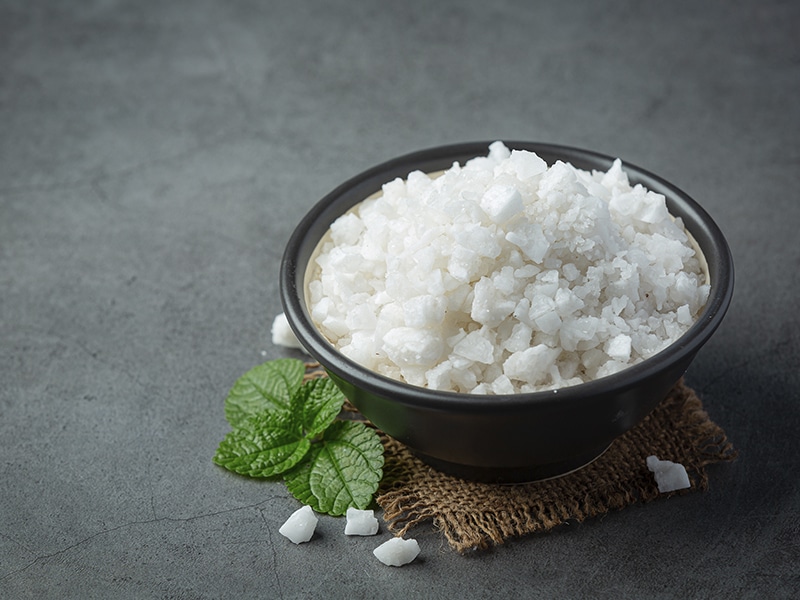What is Sodium?
Sodium is a mineral that is naturally found in foods and makes up the majority of table salt.
What Are the Effects of Consuming Too Much Sodium?
When your kidneys are not healthy, sodium and fluid can accumulate in your body. This can cause swelling in your ankles, increased blood pressure, reduced breath, and/or fluid buildup around your heart and lungs.
Why Do I Need to Limit My Sodium Intake?
Certain amounts of sodium and salt are necessary for maintaining water balance in our bodies. However, when the kidneys lose the ability to balance sodium and water, we might experience the following symptoms:
• Thirst
• Fluid retention
• High blood pressure
By using less sodium in your diet, you can manage these issues.
Tips for reducing sodium in your foods:
• Cook with herbs and spices instead of salt.
• Read labels and choose foods with lower salt content.
• Avoid salt substitutes and low-sodium foods with salt substitutes. As these substitutes are often high in sodium.
• When dining out, ask for unsalted meat or fish. Request sauces or dressings on the side, as they contain high amounts of salt and should be used in small quantities.
• Limit the consumption of canned, processed, or frozen foods.
Reading Labels Properly:
• Understanding the Terms:
o Sodium-free: Only a trivial amount of sodium per serving.
o Very low sodium: 35 mg or less per serving.
o Low sodium: 140 mg per serving.
o Reduced sodium: Foods in which sodium is reduced by 25%.
o Light in sodium: Foods in which sodium is reduced by 50%.
• Simple Rule: If salt is one of the first 5 ingredients, the food is high in sodium.
All labels now include milligrams (mg) of sodium. Follow these steps when reading sodium information on the label.
- Check how much sodium you can consume daily: Remember there are 1,000 mg in a GRAM. For example, if your diet allows 2 grams of sodium, your limit is 2,000 mg per day. Add up the sodium values in the foods you consume throughout the day.
- Examine the package label: Look at the serving size and the nutritional values per serving. How does it compare to your daily allowance? If the sodium level is 500mg or more per serving, that food is not a good choice.
- Compare labels of similar products: Choose the one with the lowest sodium concentration per serving.
Adding Flavor to Your Meals:
Eliminating salt doesn’t mean you have to eliminate flavor. Learn to season your foods with herbs and spices, be creative, and experiment with new and exciting flavors.
What Types of Herbs and Spices Can I Use Instead of Salt for Flavor?
Try the following spices with the indicated foods:
Black Pepper:
Use with beef, pork, and most vegetables.
Basil:
Use with beef, pork, and most vegetables.
Caraway:
Use with beef, pork, green beans, cauliflower, cabbage, beets, asparagus, and in marinades.
Bay Leaf:
Use with beef, pork, and most vegetables.
Curry:
Use with beef, chicken, fish, green beans, carrots, and marinades.
Dill:
Use with beef, chicken, green beans, cabbage, and peas.
Ginger:
Use with beef, chicken, pork, green beans, cauliflower, and eggplant.
Marjoram:
Use with beef, chicken, pork, green beans, cauliflower, and eggplant.
Rosemary:
Use with chicken, pork, cauliflower, peas, and marinades.
Thyme:
Use with beef, chicken, pork, fish, green beans, eggplants, and carrots.
Sage:
Use with chicken, pork, eggplant, and dressings.
Suggestions for Cooking with Herbs and Spices:
- Buy small quantities of dried herbs. They lose their flavor when stored for years.
- Add spices to food 15 minutes before it finishes cooking.
- Add whole spices to food 1 hour before it finishes cooking.
- Combine herbs with oil or butter. Let it sit for 30 minutes to infuse the flavor. Then, use a spoon to add it to your cooking or add it an hour before you start cooking.
- Crush dried herbs before adding them to dishes.
Can I Use Salt Substitutes?
Caution! If you have been advised to limit potassium in your diet, be very cautious as most salt substitutes contain some form of potassium. Consult your doctor or nutrition expert before using salt substitutes.




